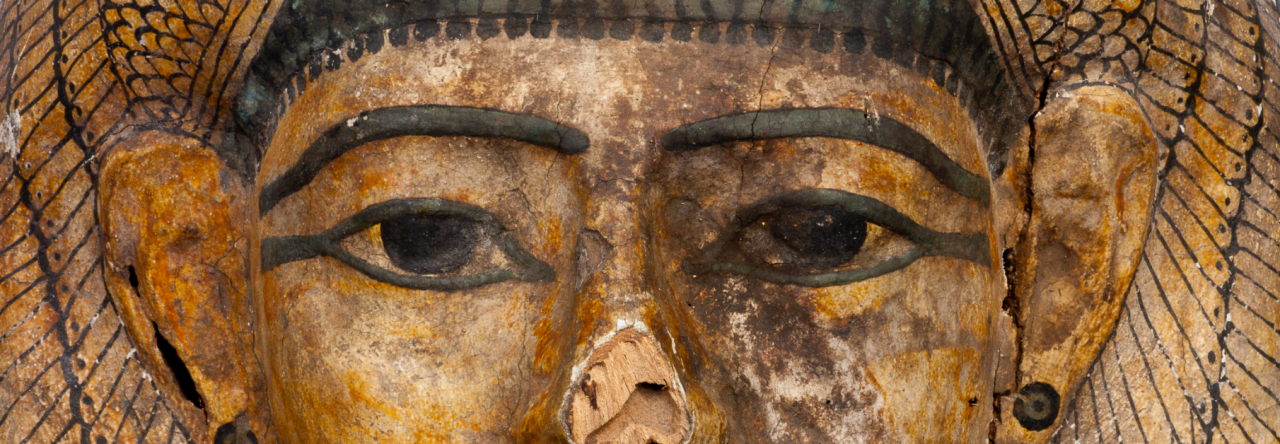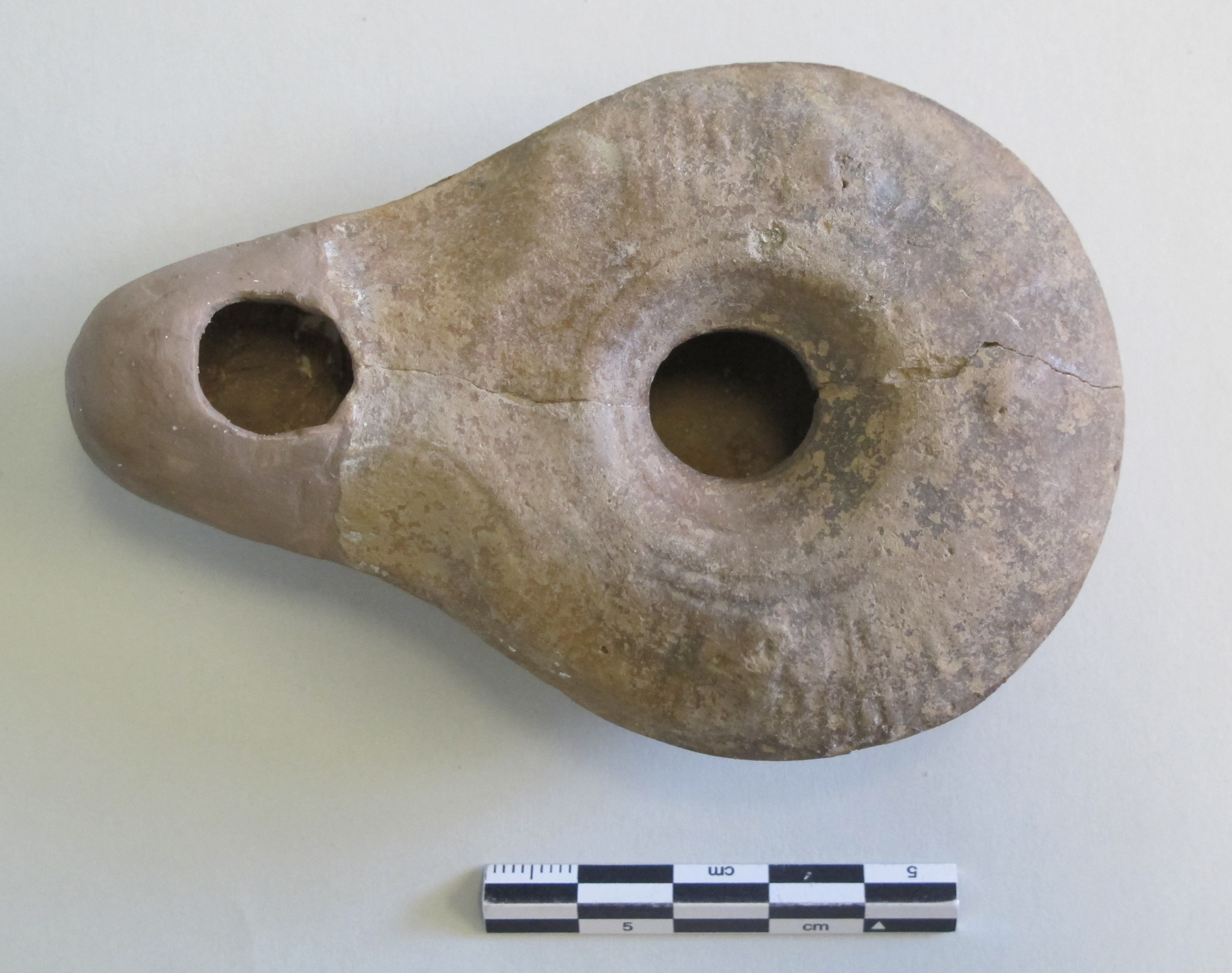AWG2008.01.01
Nabataean
3rd century BCE - 1st century CE
Material: Clay
Technique: Mold made
Weight: 85g
Dimensions: Max. preserved length 7.5cm, max. height 2.5cm, diameter 7cm
Condition: Nozzle restored by Gertrude Howland, entire lamp is worn and design faded
Provenance: From near Petra, Jordan
Source/donor: Gift of Mrs. Gertrude Murrell duPont Howland
Date of acquisition: Acquired in 1963 and donated to the gallery in 2008
Research by: Paige Walworth (Maggie Walker Governor’s School, ’22), Amy Nicholas, ’11
Detailed description of form/shape:
Made from a brownish clay, this lamp has a circular body which merges into a long, slender, nozzle, pierced at the tip. In the center of the body is a recessed hole. A horizontal line is apparent, dividing the lamp into a top and bottom section.
Description of Decoration:
Surrounding the central hole are two circular lines, and faint lines radiate from the center towards the outside of the lamp. There are two volutes on either side extending from the shoulder to the wick-hole, and three clusters of rosettes above and on either side of the central hole. The design on this lamp is worn down and not as high relief as when created.
Comparanda:
For examples of classic Nabatean “rosette lamps” with more distinct designs, see Lapp and Nicoli 2014,fig. 2 (from Aqaba) ; Royal Ontario Museum, inv. no. 963.157.8 (from Petra); Claremont Colleges Digital Library inv. no. 79.1.6 (from Petra); Hickox 2021 (from Humeyma); and Sussman 2012, figs. 93-100, 114. For a lamp with a similar circular decoration around the top hole and extending lines, cf. Louvre inv. no. AO 5935.
Discussion:
This lamp was acquired by Gertrude Howland in 1963 and donated to the Ancient World Gallery in 2008. The nozzle was restored by Gertrude Howland.
The horizontal line on the side indicates that this lamp was made from a mold. Molds were frequently made from clay, plaster, or a soft stone such as limestone. Both the top and bottom half of the lamp were made by pressing clay into the mold, and then the two halves were attached to each other. The holes for the wick and oil were cut out before firing. (For examples of lamp molds, see Louvre inv. no. AO 1261 58 and Louvre inv. no. CA 667.) The use of molds allowed for quicker production of lamps and the recreation of popular designs. Molds could become worn down over time, which would result in undefined decorations, which in addition to age and general wear, is possibly a reason for the faint designs on this lamp.
The design on this lamp is similar to many Nabataean lamps, with a series of lines extending from the center. There are two volutes extending from the shoulder to the wick-hole and several clusters of faint rosettes. While this lamp was acquired in Petra, Jordan, and has many characteristics of a Nabataean lamp, it is difficult to specifically date it beyond the general range of the Nabataean kingdom.
Bibliography:
Hickox, Lilly. 2021. “Casting Light on Humeyma’s Roman Town.” Stipend report, ASOR newsletter, https://www.asor.org/news/2021/12/stipend-report-hickox?fbclid=IwAR0oUerk_DFWs3MKmdpktNiO60_R6JdncMGttKMTHvR2sbbaMTK-dcZhvK0.
Khairy, Nabil I. “A Study of the Nabataean Minor Arts and their Cultural Interpretations.” Department of Antiquities of Jordan. http://publication.doa.gov.jo/Publications/ViewChapterPublic/290.
Khairy, Nabil I. 1984. “Neither ‘Tlt’ nor ‘Alt’ but ‘Rayt.’” July 19, 2013. Palestine Exploration Quarterly, 116.2: 115-119. https://doi.org/10.1179/peq.1984.116.2.115
Lapp, Eric and Joe Nicoli. 2014. “Exploring 3D modeling, fingerprint extraction, and other scanning applications for ancient clay oil lamps.” Digital Applications in Archaeology and Cultural Heritage 1.2: 34-44. https://doi.org/10.1016/j.daach.2013.12.001.
McConahay, Brandi. 2016. “Breverman Collection.” Miami University Art Museum. https://www.miamioh.edu/cca/art-museum/collections/breverman-collections/index.html.
Sussman, Varda. 2012. Roman Period Oil Lamps in the Holy Land: Collection of the Israel Antiquities. Oxford: BAR Publishing.


